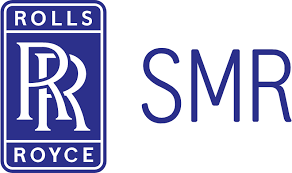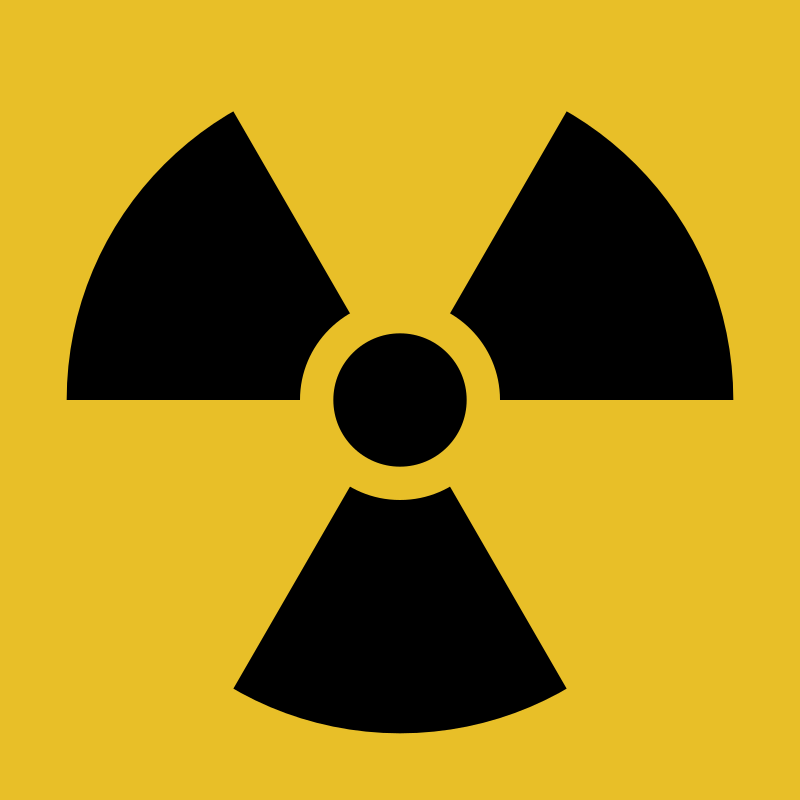EDF is the French utility which builds, operates and sell nuclear fission power reactors. They just announced that they will create a wholly-owned subsidiary which will market their Nuward small modular reactor (SMR). The purpose of this action is to allow the Nuward reactor to meet its “next key milestones” on the way to first pouring of concrete for an power plant in 2030.
Following the conceptual design phase, EDF said that “Nuward will now proceed with the basic design activities to progress design maturity, leveraging the expertise and experience of EDF Group’s nuclear engineering teams, while also benefiting from the support of an international network of industrial partners”.
A Design and Safety options file must be submitted to the French Nuclear Safety Authority in July. Discussion and engagement will also take place to assess and select possible sites for the first plant in France.
The Nuward SMR project was launched in September of 2019 by the French Alternative Energies and Atomic Energy Commission (CEA), EDF, Naval Group and TechnicAtome. The first Nuward project consists of a three hundred and forty megawatt SMR plant with two pressurized water reactors (PWR) of one hundred and seventy megawatts each. It has been jointly developed using France’s long-term experience with PWRs. The new SMR technology is expected to replace old high CO2-emitting coal, oil and gas power plants around the world. Other applications such as hydrogen production, urban and district heating or desalinization will also be supported.
Nuward company will continue to work with its long-time partners as well as new partners following its establishment. Its workforce is expected to expand to about one hundred and fifty workers in its core team by 2024. More than six hundred workers in total including partners’ staff will be contributing to the project.
Renaud Crassous is Nuward’s President. He said the aim was to “fully integrate the SMR catalysts for success, i.e. innovation, modularization, standardization and series production. We are committed to increasing the speed of execution to deliver the Nuward SMR design on time to meet market expectations for first nuclear concrete as early as 2030.”
Xavier Ursat is the EDF Group Senior Executive in charge of Engineering and New Nuclear Projects Division. He said that as a subsidiary embedded within the EDF Group, Nuward will be “a key enabler for a time-to-market product, providing the agility and speed required to meet the next key milestones”.
The Nuward is one of a variety of SMRs in development at the moment in different countries and the company hopes to eventually become the European leader in SMR technology. It has already attracted interest elsewhere in Europe. A regulatory agreement was reached last year. This means that the French nuclear safety regulator and Czech and Finnish regulators are collaborating for a pilot European early joining regulatory review.
According to EDF’s SMR roadmap, the phase involving the detailed design and formal application for a new nuclear facility is scheduled to begin in 2026. This will be followed by pouring the first concrete in France in 2030 with the construction of that first unit anticipate to take about three years.
Blog
-

Nuclear Reactors 1199 – EDF Is Spinning Off SMR development To A New Subsidiary called Nuward
-

Geiger Readings for Mar 30, 2023
Ambient office = 63 nanosieverts per hour
Ambient outside = 139 nanosieverts per hour
Soil exposed to rain water = 119 nanosieverts per hour
Tomato from Central Market = 94 nanosieverts per hour
Tap water = 88 nanosieverts per hour
Filter water = 77 nanosieverts per hour
-

Nuclear Reactors 1198 – Majors Producers Of Medical Isotope Molybdenum-99 Have Converted From The Use Of HEU Targets To LEU Irradiation Targets
All of the facilities in the world that produce molybdenum-99 (Mo-99) are now using low-enriched uranium (LEU) targets instead of proliferation-sensitive highly-enriched uranium (HEU) targets. Belgium’s National Institute of Radioelements (IRE) medical isotope production facility was the last facility to convert to LEU.
Mo-99 is the most widely used radioisotope in nuclear medicine for diagnosis. Historically, it was usually produced by irradiating HEU in nuclear reactors and then processing the irradiated materials to extract the Mo-99. This is seen as a serious nuclear proliferation risk.
A commitment was made at the 2012 National Security Summit for the U.S. Department of Energy’s National Nuclear Security Administration (NNSA) to provide financial and technical assistance to global producers of Mo-99 for the conversion from HEU to LEU targets. Such conversions were technically complex. They required qualification of new LEU target for irradiation in nuclear reactors, modifications of specialized equipment for processing irradiated target, and extensive reviews from both nuclear safety and medical regulators.
South Africa’s NTP Radioisotopes converted to LEU targets in 2017 and the Netherlands’ Curium converted in 2018 with the assistance of the NNSA. Australian Nuclear Science and Technology Organization is the fourth largest Mo-99 producer in the world. It has always used LEU targets.
The IRE is the world’s leading producer of Mo-99. Preliminary consultations between the IRE and the Belgian nuclear regulator, the Federal Agency for Nuclear Control (FANC), on the conversion from HEU to LEU targets began in 2015. The IRE requested in July of 2016 to change its licensing conditions to enable the switch. On the 24th of October 2017, the permit for the development of production with LEU targets was granted by Royal Decree. FANC and its technical subsidiary Bel V approved the beginning of Mo-99 production with LEU targets on the 14th of April 2020. The first batch of Mo-99 utilizing with LEU targets was produced in May of 2020.
In February of 2021, IRE announced that its first commercial deliveries of iodine-131 (I-131) based on the irradiation of LEU targets had begun. I-131 is used for therapeutic purposes. IRE recently announced that it had completed conversion of its production process to LEU targets. This ended the global civilian use of HEU targets for the production of medical isotopes.
IRE said, “This complete conversion to a LEU process represents the culmination of years of work and collaboration between the R&D, production, safety, quality assurance and regulatory teams of IRE around an entirely new industrial process for supplying Mo-99 and I-131 to healthcare professionals, without impacting the site’s production capacity. This outcome would not have been possible either, without the upstream collaboration of the research reactors which irradiate the uranium targets, but also downstream thanks to IRE customers who had to modify the application files of their Mo-99 and I-131-based drugs and have them approved.”
Erich Kollegger is the CEO of IRE. He said, “IRE will continue to innovate in order to contribute even better to saving lives thanks to nuclear medicine applications, while increasing the safety of our processes and our facilities.”
Jill Hruby is an NNSA Administrator. She said, “For decades, access to life-saving medical isotopes depended on the shipment of proliferation-sensitive nuclear material across continents. With IRE’s production facility converted to LEU, all major producers across the Mo-99 industry can perform their vital work without HEU targets.”
NNSA is also assisting research reactor operators to convert from HEU to LEU fuel. Some of these reactors provide irradiation services for Mo-99 production. There are six research reactors in the world with a major role in Mo-99 production. Five of them now use LEU fuel. Belgium’s BR2 research reactor is the sixth and it is expected to convert to LEU fuel in 2026. LEU test assemblies are currently being irradiated in the BR2 reactor. This is the final major technical step towards conversion. -
Nuclear News Roundup Mar 29, 2023
Iran may set deadline for nuclear talks, says FM Amir-Abdollahian Aljazeera.com
Environmental permits granted for Sizewell C world-nuclear-news.org
British-Korean partnership for fusion robotics world-nuclear-news.org
NuScale places first order for SMR long-lead materials world-nuclear-news.org
-

Geiger Readings for Mar 29, 2023
Ambient office = 140 nanosieverts per hour
Ambient outside = 145 nanosieverts per hour
Soil exposed to rain water = 143 nanosieverts per hour
Red bell pepper from Central Market = 103 nanosieverts per hour
Tap water = 106 nanosieverts per hour
Filter water = 84 nanosieverts per hour
-

Nuclear Reactors 1197 – Rolls-Royce SMR Has Signed Memorandums of Understanding With Finland, Sweden and Ukraine
Rolls-Royce SMR has signed memorandums of understanding (MoUs) to consider the deployment of its small modular reactor (SMR) in Finland and Sweden. It will also help post-war recovery in Ukraine.
Under an MoU signed with Ukraine’s state-owned nuclear energy utility Energoatom, the companies will collaborate to explore future opportunities to deploy Rolls-Royce SMR reactors in Ukraine as it begins to rebuild. Rolls-Royce SMR has committed to supporting Ukraine’s recovery by deploying an SMR power plant “capable of generating enough carbon-free electricity to power one million homes for over 60 years”.
The MoU was signed on the 20th of March by Energoatom President Petro Kotin and Sophie Macfarlane-Smith who is the head of customer engagement at Rolls-Royce SMR.
Kotin said, “Cooperation between Energoatom and Rolls-Royce SMR has reached a new. Today we signed an agreement that will allow Ukraine not only to start a high-quality post-war reconstruction of the energy infrastructure, but also to become one of the first countries in the world to attract promising technologies of small modular reactors for this purpose.”
Tom Samson is the CEO of Rolls-Royce SMR. He added that “Thanks to our own British nuclear technologies, we can potentially help the people of Ukraine to quickly rebuild and restore energy security and independence.”
In May of 2022, Kotin stated that construction work on two new Westinghouse units at the Khmelnitsky nuclear power plant “will begin as soon as the war is over”. He went on to say that an agreement signed with Westinghouse covered the construction of five units. The other three units will be distributed at Ukraine’s other existing nuclear power plants.
Rolls-Royce SMR has signed an MoU with Finish utility Fortum to jointly explore the opportunities for the deployment of SMRs in Finland and Sweden. Fortum operations include the Loviisa nuclear power plant in Finland. Fortum announced in October of 2022 a project to explore the prerequisites for new nuclear power plants in Finland and Sweden. The project includes potential partner networks and cooperation agreements. Fortum said that it considers SMRs to be part of nuclear power’s future. It is “interested in the possibilities of nuclear in heat and hydrogen production”.
Laurent Leveugle is Fortum’s Head of New Build Feasibility Study. He said, “Fortum is happy to start a collaboration with Rolls-Royce SMR which is one of the forerunners in the small modular reactor industry. We are especially interested in learning more about Rolls-Royce SMR’s delivery model considering Rolls-Royce’s historical industrial experience.”
Alan Woods is the Director of Strategy and Business Development for Rolls-Royce SMR. He said, “Rolls-Royce SMR is honored to be collaborating with Fortum, as one of the most respected nuclear operators in the Nordics, and we see great benefit in the co-operation between our two organizations. The importance of energy security has increased dramatically and we see our unique approach to nuclear new build – focusing on delivery capability and cost effectiveness – as the best solution to providing low-carbon energy for generations to come. We look forward to working with Fortum during their feasibility study.” The two companies noted that “any potential investment decision will be made at a later stage”.
In addition to Rolls-Royce SMR, Fortum has signed cooperation agreements with EDF of France, Kärnfull Next of Sweden and Helen of Finland. -
Nuclear News Roundup Mar 28, 2023
UN Nuclear Chief to Focus on Proposing Safety Measures Around Ukraine Nuclear Plant (usnews.com) usnews.com
Final fuel transfer from storage basin at INL world-nuclear-news.org
Contract for Shin Hanul 3 and 4 major components signed world-nuclear-news.org
Russia Starts Military Training With Nuclear-Capacity Missiles telesurenglish.net
-

Geiger Readings for Mar 28, 2023
Ambient office = 85 nanosieverts per hour
Ambient outside = 104 nanosieverts per hour
Soil exposed to rain water = 110 nanosieverts per hour
Iceberg lettuce from Central Market = 99 nanosieverts per hour
Tap water = 94 nanosieverts per hour
Filter water = 81 nanosieverts per hour
-

Nuclear Reactors 1196 – The Future Of Nuclear Power Is Not Bright
This is my three thousandth blog post. I have covered a broad range of issues dealing with nuclear power, nuclear weapons and nuclear materials use in other industries. I will admit that I am not a fan of nuclear fission power. However, I feel that there is enough publicity and money flowing into the support of nuclear power that my small voice in opposition will hardly balance the scales.
A member of my family is a mechanical engineer who spent his whole career in the nuclear industry. Back in the the 1970s, I was talking to my father and another brother about the nuclear industry. I was a young man with limited experience in the world but I was informed enough to have concerns about politics and business. I said that I have no doubt that my brother and other engineers could design safe nuclear power reactors. The problem I had with nuclear power was that we would have to depend on government regulators and the companies that owned and operated commercial nuclear power plants to be about ten times as competent and honest as they had ever shown themselves to be in the past. Over the past fifty years I have not been encouraged by what I have seen and blogged about.
Nuclear projects generally run over budget and behind schedule. Nuclear power is advertised to be a solution to climate change because during operations it does not generate CO2. However, over the lifetime of a nuclear power plant, it generates more CO2 than renewable energy sources such as wind, solar, and hydro power. While the cost of these renewables is constantly falling, the cost of new nuclear builds is constantly rising. Unfortunately, there is not enough time or money to license and build enough nuclear power plants to put a dent in carbon emissions soon enough to help mitigate climate change. And for those who say that we should expand nuclear power along with the adoption of renewable sources, my response is that studies have shown that major expansion of nuclear power and broad adoption of renewables cannot both be carried out.
The problem of spent nuclear fuel waste has not been solved. Tons of spent fuel resides in cooling pools and temporary storage casks around the world. Many plans were laid and much work was done testing different storage plans but as decades have passed none of these solutions has been implemented on a wide basis. If many new nuclear plants are build to generate power, the spent nuclear fuel will become an even bigger problem. A big concern I have is that without a good spent fuel solution, it may be tempting to just close and fence in old nuclear power plants in the hope that a solution will be found in the future. Over time, the money and interest needed to keep these mothballed plants safe will decline and they will be come a major hazard.
I have blogged about possible security problems at nuclear power plants in the past but my concerns about possible damage, either intentional or accidental, to nuclear power plants that could release radioactive material during armed conflicts were largely theoretical. Since the invasion of Ukraine by Russia, suddenly these concerns are much more pertinent than ever before. Fighting in and around the Zaporizhzhia nuclear power plant in Ukraine have endangered central Europe and continue to this day. Every nuclear power plant in the world is in danger from saboteurs, rebels, invasions, etc.
The bottom line is that there is so much money sloshing around in nuclear projects that they are very attractive to leaders and businessmen. I have a lot of reasons to be negative about nuclear energy but ultimately, the rejection of nuclear power will hinge on the next big nuclear accident (which is inevitable), which will sour the public, the politicians and investors on nuclear power permanently. One big release of nuclear materials any where in the world will threaten the future use of nuclear power everywhere.
I will continue to blog about nuclear issues. I hope my concerns and dire predictions will turn out to be wrong. However, I am convinced that nuclear power is not the solution to our energy needs or climate change mitigation.
